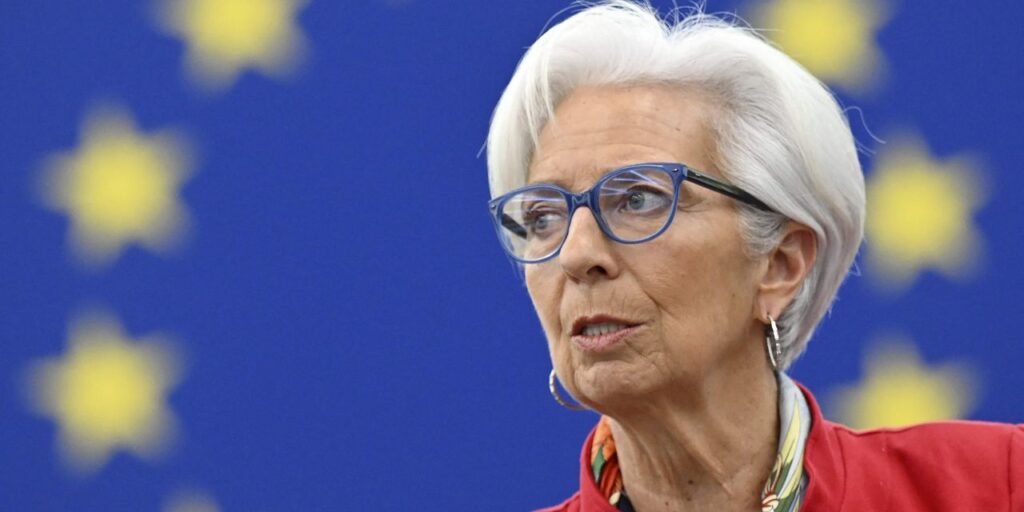Eurozone inflation fell more than expected in May on slowing food and declining energy prices, as underlying pressures also eased, welcome news for the European Central Bank which could be approaching the end of its tightening cycle.
The eurozone’s consumer price index increased 6.1% in May on year, tumbling from a 7.0% rise in April, preliminary data from the European Union’s statistics agency Eurostat showed Thursday, the lowest level since February 2022. The reading also came in below the 6.4% consensus forecast from economists in a poll by The Wall Street Journal.
The bloc’s core inflation rate–which strips out the more-volatile categories of food and energy–also dipped to 5.3% in May from 5.6% in the prior month, a relief for ECB policymakers who have become more concerned with underlying inflationary pressures than the headline rate.
Still, the headline rate is well above the ECB’s target rate of 2%, though core pressures easing could signal that the bank’s fastest-ever tightening cycle is coming to close. The Frankfurt institution will decide whether to raise the key deposit rate beyond the current 3.25% on June 15.
Driving the declining rate of inflation in May was easing food, alcohol and tobacco prices, rising 12.5% on year, still high but slowing from 13.5% in April. Energy prices fell on-year in May by 1.7%, from a rise of 2.4% in the prior month, further proof that the bloc evaded a long-feared energy crisis after Russia’s invasion of Ukraine in 2022.
Services inflation declined to 5.0% in the month from 5.2% in April, while for non-energy industrial goods, it declined to 5.8% from 6.2%.
By country, rates of inflation generally declined, with CPI prints prior to the eurozone’s main reading broadly dropping more than expected. German inflation, the eurozone’s largest economy, fell to 6.3% from 7.6%, while it also declined in France, Italy and Spain. The only nation where inflation rose was the Netherlands, to 6.8% from 5.8%.
However, while some pressures on inflation seem to be lifting, the bloc’s job market remains tight, with data released separately on Thursday showing unemployment fell to 6.5%, its lowest level on record.
Inflation in the euro area is still expected to be elevated for the remainder of the year putting continued pressures on consumers and likely subduing economic growth. The annual rate is seen averaging at 5.8% in 2023, before falling to 2.8% in 2024, according to European Union forecasts published in May.
Write to Ed Frankl at [email protected]
Read the full article here











